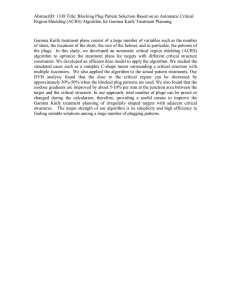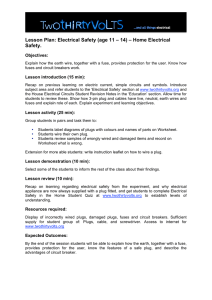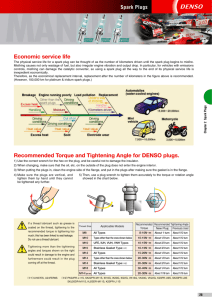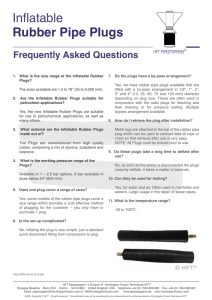An electrical plug is an electrical plug. So what is the big deal?
advertisement
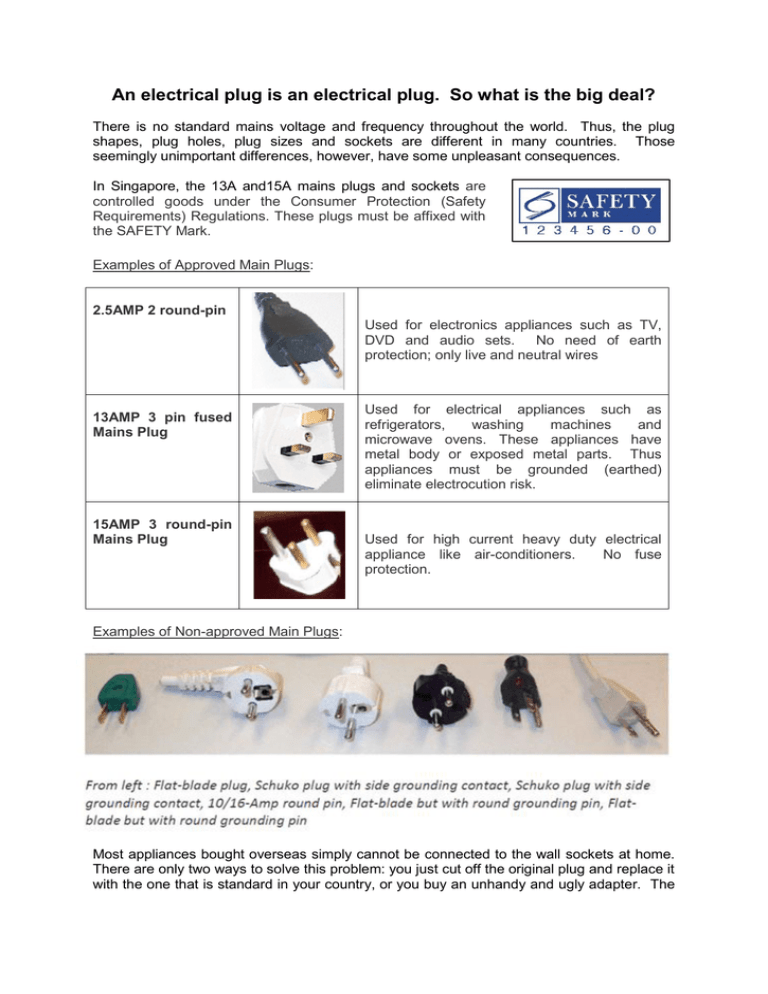
An electrical plug is an electrical plug. So what is the big deal? There is no standard mains voltage and frequency throughout the world. Thus, the plug shapes, plug holes, plug sizes and sockets are different in many countries. Those seemingly unimportant differences, however, have some unpleasant consequences. In Singapore, the 13A and15A mains plugs and sockets are controlled goods under the Consumer Protection (Safety Requirements) Regulations. These plugs must be affixed with the SAFETY Mark. Examples of Approved Main Plugs: 2.5AMP 2 round-pin Used for electronics appliances such as TV, DVD and audio sets. No need of earth protection; only live and neutral wires 13AMP 3 pin fused Mains Plug 15AMP 3 round-pin Mains Plug Used for electrical appliances such as refrigerators, washing machines and microwave ovens. These appliances have metal body or exposed metal parts. Thus appliances must be grounded (earthed) eliminate electrocution risk. Used for high current heavy duty electrical appliance like air-conditioners. No fuse protection. Examples of Non-approved Main Plugs: Most appliances bought overseas simply cannot be connected to the wall sockets at home. There are only two ways to solve this problem: you just cut off the original plug and replace it with the one that is standard in your country, or you buy an unhandy and ugly adapter. The adaptor to be used in Singapore is also a controlled item and must be certified to Singapore Standard or equivalent bearing the same “Safety Mark” certification. There are so called “multi-socket adaptor” (mostly not approved) in the market. These are dangers in using these. There are five issues with the use of such non-approved plugs and adaptors are: a) The dimension of the round or flat pins (American, German or China) will likely stress the contacts of the mains socket outlet and damage the sockets. This may cause failure or electrocution/shock. b) The wrong plugs would also mean that the surface area of contact for the conduction of electricity from the sockets to the plugs is very small and this would subsequently lead to poor contact and overheating due to arcing. This is a fire hazard. (see diagram) c) Some of the mains plugs from other countries come without “ground” contacts or the “ground” contact strips is located on the side of the plug. Using them will mean that the appliance, especially with metal parts, will not be properly earthed. An appliance fitted with plug with ground strips is not safe for use due to risk of electrocution. d) Most of these foreign plugs do not have any fuse which will mean that there is lesser protection for your appliances, causing overload and damage to equipment. e) For American 3 pin plugs, the plugs are used in an “inverted” position with the earth at the bottom which is opposite of Singapore‟s system. This means the “live” wire is opposite to that in Singapore. Whilst this is not an issue with appliances using only live and neutral phases, the electrical switches may pose an issue in terms of electrical isolation especially for repair. German Schuko plugs with round pins and external earth strip American 3 Plugs with asymmetric flat pins and extended length round earth pins used in „reversed‟ position Poor Electrical contacts using a round pin or flat bar pins into Singapore 3 Pin (Rectangular) Electrical Socket Point or limited electrical contact leading to overheating
